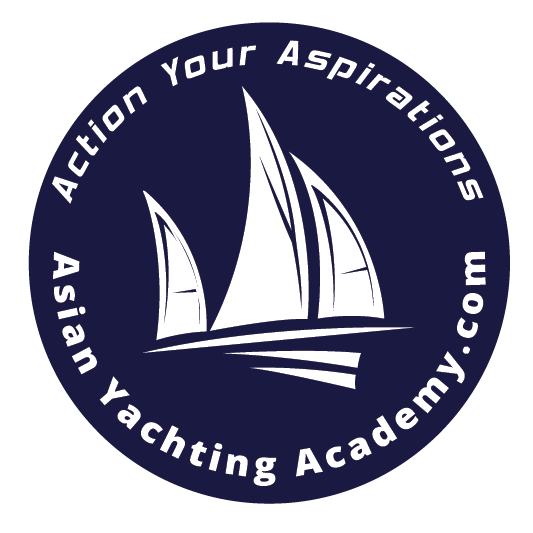Skills and knowledge required for an PWC Operator
A – YACHT CONSTRUCTION
1. Basic yacht parts and what they are designed for:
a) On deck
-Bow, stern, aft, cockpit, etc.
2. Basics of safe onboard operations
a) Outfit suitable for sailing in various conditions
b) Personal safety equipment
(lifejackets,harnesses, jackstays, etc.)
c) Distress signaling equipment
(pyrotechnics,mirror,flags etc.)
d) Fire fighting equipment (fire extinguishers- with
consideration of various types available,
fire blanket)
e) Various methods to make a distress signal
(at least 4 methods)
f) First Aid Kit location and content
g) Secure ways to store things on board
I) Basic level of practical skills in the above.
3. Safe operation of elementary yacht systems
a) Electric system
b) Basic level of practical skills in the above.
4. Fuel supply system
a) Secure storage and handling of fuel and other
flammable substances onboard as well as the
ecological hazards of dealing with such substances
b) The design and operation of the fuel system and
its proper functioning
c) Filling up the fuel tanks
d) Basic level of practical skills in the above.
5. Elementary yacht sailing equipment and how to use It
a) Logs (measurement of speed and distance)
b) Steering system
c) Basic level of practical skills in the above.
B – ENGINE HANDLING
1. Operating the inboard engine
a) Safety issues in relation to engine operations
b) Check before starting
c) Starting
d) Checking whether the cooling system works
e) Switching off
f) Checking oil level
g) Basic level of practical skills in the above.
C – LINES AND SPRINGS
1. Knots
a) Bowline
b) Fast line on a cleat
c) Coiling mooring lines
d) Basic level of wactical skills in the above.
2. Lines handling
a) Basic safety issues when handling lines
b) Basic level of practical skills in the above.
D – ANCHORING
1. Safety iuues when using an anchor
a) Principles of how the anchor works
b) Basic level of practical skills in the above.
E – SAFETY
1. Handling emergency situations
a) GSM rescue call;
b) Safety procedures in case of:
– Capsizing
c) Basic level of practical skills in the above.
F – HANDLING YACHT UNDER POWER
1. Safe handling of the yacht under power
a) Inertia and lack of steering upon engine shut
down on yachts with certain types of engine;
b) Effective helm operation during the day and in
good weather conditions;
c) Launching and recovering a boat;
d) Basic level of practical skills in the above.
G – MAN OVER BOARD
1. Procedure after falling overboard
a) Proper behaviour (Do not panic, do not
swim, take a position protecting against heat
loss. Protect your face.)
2. M.O.B. approach under power
a) Approach a MOB:Against the wind and
current, pick up from the side.
Watch your propeller;
b) Basic level of Practical skills in the above.
H – CEVNI REGULATIONS
1. Sign/marks and buoyage
a) Signs I marks applicable on inland waters;
b) Buoyage on inland waters;
2. Other rules
a) Vessels, priority;
b) Continues observation requirement;
c) After-collision rules;
I – PILOTAGE
1. Basic pilotage rules and sources of information
on inland waters
a) Distinction of water routes
(on rivers, on lakes etc.);
J – COLLISION REGULATIONS
1. Other rules
a) Vessels’ priority at sea;
b) Continues observation requirements;
c) After-collision rules applicable at sea.
K – NAVIGATIONAL AIDS
1. IALA A and B
a) Lateral marks (day and night)
b) Cardinal marks (day and night)
c) Other navigational marks (day and night)
L – METEOROLOGY
1. Beaufort scale and its meaning for small craft;
2. Sources of meteorological information and how
to use them;
3. Clouds
a) Cumulonimbus cloud
M – OTHER SKILLS (Ecology, Social skills)
1. Keeping observation of the sailing area and
passing over Information about the direction
and distance to objects;
2. Environmental friendly approach and respect to
other yachtsmen and women;
a) Application basic pro-environmental rules;
b) Sailing etiquette
c) Social friendly approach at sea and in harbor.
N – PULLING A SKIER OR AN OBJECT
1. Safety procedures for pulling a skier or
an object
a) Communication signs;
b) Wet start;
c) Dry start;
d) Mono-ski start;
e) Wet landing;
f) Dry landing;
g) Yacht circulation and slalom riding;
i) Basic level of practical skills in the above.
2. Areas dedicated for pulling a skier or an
object. induding marking of such areas;
3. Local law with respect to pulling a skier or
an object;


